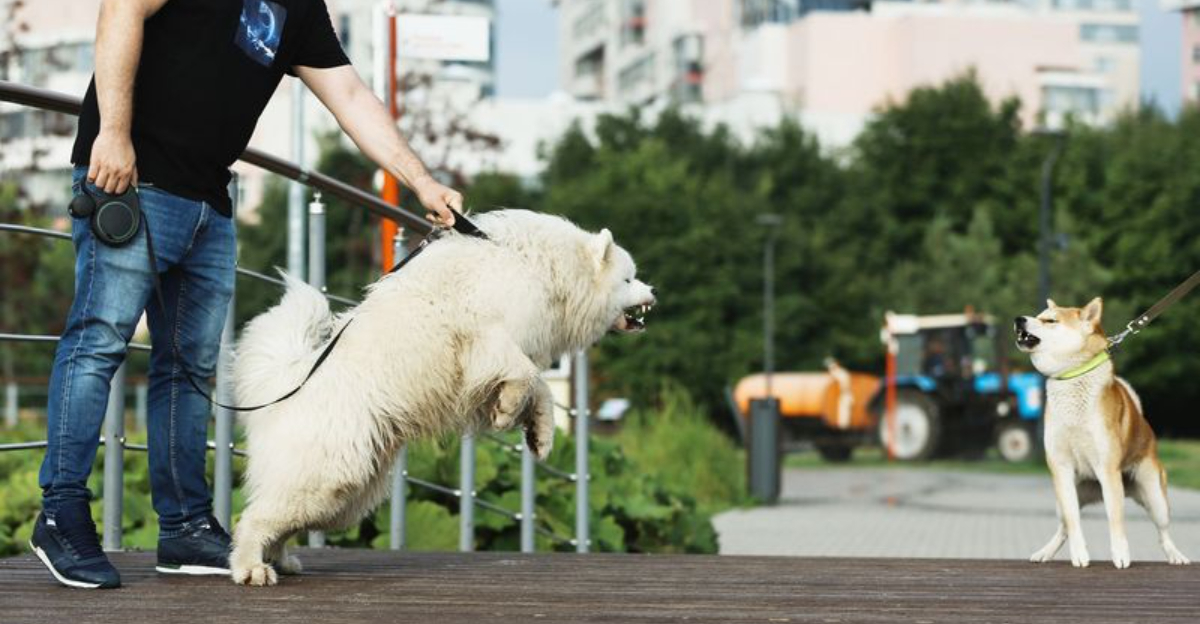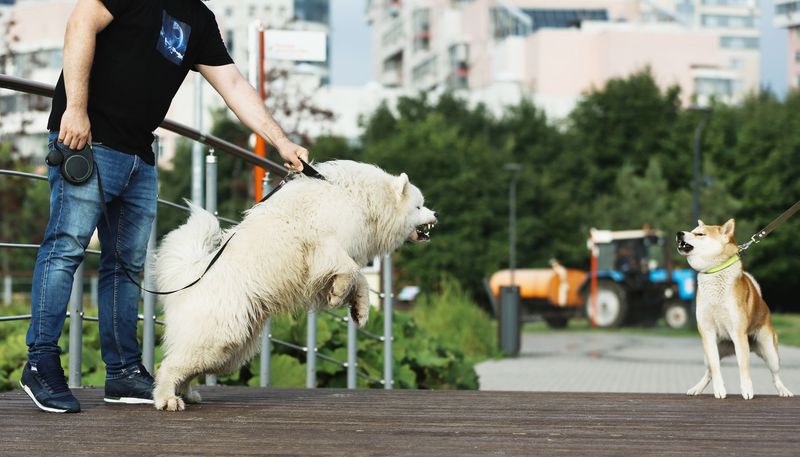Barking is a natural form of communication for dogs, but incessant barking can become a challenge for dog owners. Understanding the reasons behind your dog’s barking and employing effective calming techniques make for a harmonious life with your pet. Here are nine methods to help calm a barking dog, each tailored to address different triggers and dog personalities.
Exercise and Play
Every dog owner knows a tired dog is a quiet dog. Regular exercise and play can significantly reduce barking. Whether it’s a game of fetch or a long walk, keeping your dog physically active helps channel its energy positively.
Think about a Sunday afternoon in the park, your dog chasing after a frisbee, tongue out, tail wagging. This isn’t just fun; it’s essential for their well-being.
An hour of daily exercise could be the difference between a peaceful home and constant barking. Remember, a busy dog is a happy dog.
Mental Stimulation
Is your dog barking out of boredom? Mental stimulation could be the answer. Dogs, like humans, need mental challenges to keep their minds sharp and content.
Imagine a Border Collie, head tilted in concentration, as it solves a new puzzle toy. This kind of engagement can be captivating for both the pet and the owner.
Investing in interactive toys that test your dog’s brainpower can lead to a quieter and more satisfied pet. Engaging their minds can be just as tiring as physical exercise.
Obedience Training
Training isn’t just about tricks; it’s about creating a language between you and your dog. Through obedience training, you can establish commands that control excessive barking.
Picture a Golden Retriever, eyes locked onto its owner’s, responding to a gentle “quiet” command. This bond makes communication seamless and rewarding.
Training sessions should be consistent but fun, transforming commands into a game for both of you. This method not only reduces barking but also strengthens the bond you share.
Create a Calm Environment
Your dog’s environment plays a pivotal role in their behavior. A chaotic or loud household can trigger barking.
Visualize a serene Beagle, nestled in its cozy bed, soft music playing in the background. Creating a tranquil space can alleviate stress and reduce barking.
Consider using calming colors, soft lighting, or even a designated quiet corner for your pet. These small changes can make a big impact on your dog’s peace of mind.
Comfort Through Scent
Scent is a powerful sense for dogs, often overlooked by owners. Certain scents have calming properties, like lavender or chamomile.
Picture a Shetland Sheepdog, its nose buried in a lavender-scented blanket, visibly relaxing into the fabric. This subtle addition can dramatically improve their calmness.
Incorporating calming scents into your dog’s bedding or their environment can ease anxiety and reduce the impulse to bark incessantly.
Socialization
Socialization is crucial for dogs to understand and react positively to new situations. A well-socialized dog is often calmer and less prone to excessive barking.
Picture a young German Shepherd frolicking with friends at the dog park, learning boundaries and manners through play. These interactions teach them confidence and control.
Regular exposure to different environments and other dogs can help your pet learn to remain calm, reducing their urge to bark unnecessarily.
Address Anxiety
Anxiety is a common cause of barking in dogs. Identifying and addressing it can lead to a calmer pet.
Imagine a small Terrier, snug in its ThunderShirt, breathing easily in a quiet room. This simple tool can be a game-changer for anxious dogs.
Providing a sense of security through anxiety wraps or safe spaces can greatly diminish barking triggers, making your home a peaceful haven for your pet.
Use of Positive Reinforcement
Dogs thrive on positive reinforcement, which can be used to curb unwanted barking. By rewarding quiet behavior with treats or affection, you reinforce the desired quietude.
Visualize a Cocker Spaniel, eyes wide with delight as it earns a treat from its owner for staying calm. This approach is both effective and heartwarming.
Incremental rewards can build a pattern of good behavior, reducing barking over time. It’s about celebrating the silence rather than scolding the noise.
Consult a Professional
Sometimes, a dog’s barking requires expert intervention. Professional trainers can offer tailored solutions to address persistent barking.
Imagine a dedicated trainer, offering insights and personalized strategies to manage a dog’s vocal habits.
Engaging a professional not only assists in curbing barking but also provides owners with tools and techniques for long-term success. It’s a partnership aimed at improving life for both the dog and the owner.









